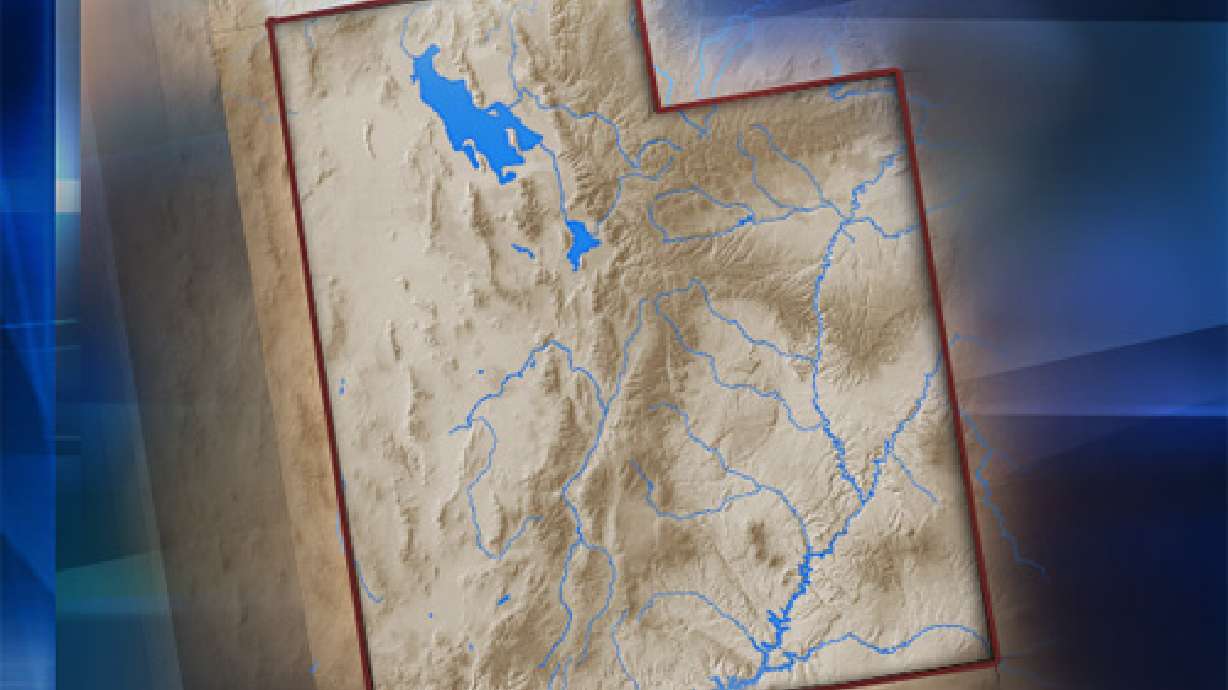Estimated read time: 3-4 minutes
This archived news story is available only for your personal, non-commercial use. Information in the story may be outdated or superseded by additional information. Reading or replaying the story in its archived form does not constitute a republication of the story.
SALT LAKE CITY (AP) -- State authorities are transferring control of a remote canyon filled with prehistoric ruins to the University of Utah for a permanent research installation.
A land trade set to occur in September will make university archaeologists permanent stewards of Range Creek Canyon, which stunned the scientific world when it was revealed in 2004.
The canyon, 125 miles southeast of Salt Lake City, was kept secret by a family of ranchers for the better part of a century before it ended up in state hands in 2004. It features the remains of ancient settlements, with the eroded remains of pit and cob houses, still-standing grain caches, and colorful trapezoidal figures painted with spiky hair styles on canyon walls.
The University of Utah will give up some of its trust lands -- elk and deer habitat in another part of the state -- to gain control of Range Creek Canyon from the Utah Division of Wildlife Resources.
"It allows us to emphasize the study of the natural history and archaeology of the canyon," said Duncan Metcalfe, chief curator of the Utah Museum of Natural History, who runs a summer school at Range Creek. "That's not really part of DWR's mission."
Mike Canning, the agency's habitat section chief, said, "We don't think we are giving up much. The public access and wildlife habitat at Range Creek will still be there."
Metcalfe said carbon dating of artifacts has revealed that about a dozen miles of Range Creek Canyon was intensively occupied by hundreds or possibly thousands of people for two or three centuries until around 1,200 A.D.
Artifacts from baskets to tobacco bundles suggest human life showed up in Range Creek hundreds of years earlier and lingered longer, but significantly, the large population seemed to virtually vanish by 1,200 A.D., for reasons not fully understood.
Metcalfe said the canyon was occupied by the so-called Fremont people, descendants of the continent's original Paleo-Indians. As a culture, the Fremont were distinguished by their style of basket weaving, animal-claw moccasins and dual survival strategy of farming and hunting. Yet little else is known about them, including their ultimate fate -- the conventional explanation of drought is coming under question.
The farming-dependent Anasazi south of the Colorado River also disappeared about the same time, for reasons archaeologists struggle to explain. Modern American Indians tribes insist they simply absorbed the ancient people.
To gain control of Range Creek, the University of Utah is giving up about 4 square miles of deer and elk habitat next to the Gordon Creek Wildlife Management Area in Carbon County. That parcel is part of the university's trust lands granted at statehood.
In return, the Division of Wildlife Resources will relinquish 2.3 square miles of parcels on Range Creek's canyon bottom.
"It seems like a perfectly good idea to us," said John Andrews, the No. 2 ranking official at Utah School and Institutional Trust Lands Administration, which is acting as a broker for the trade.
Andrews said his agency will hold title to the former ranch lands in Range Creek Canyon, but that the parcels will be controlled by the University of Utah and folded into its own set of trust lands, which are separate from the state's.
Public access, now strictly controlled, won't change significantly under land covenants and congressional legislation approving the purchase of Range Creek Canyon, which was later transferred to the state, he said.
Metcalfe said the university plans to rework some of the rules of public access to make research and the protection of sites a higher priority.
Metcalfe supervises surveys and selective digs by graduate students at Range Creek, which is guarded by a locked gate. A university caretaker spends nine months of the year in the canyon, which is snowbound during winter.
(Copyright 2009 by The Associated Press. All Rights Reserved.)








